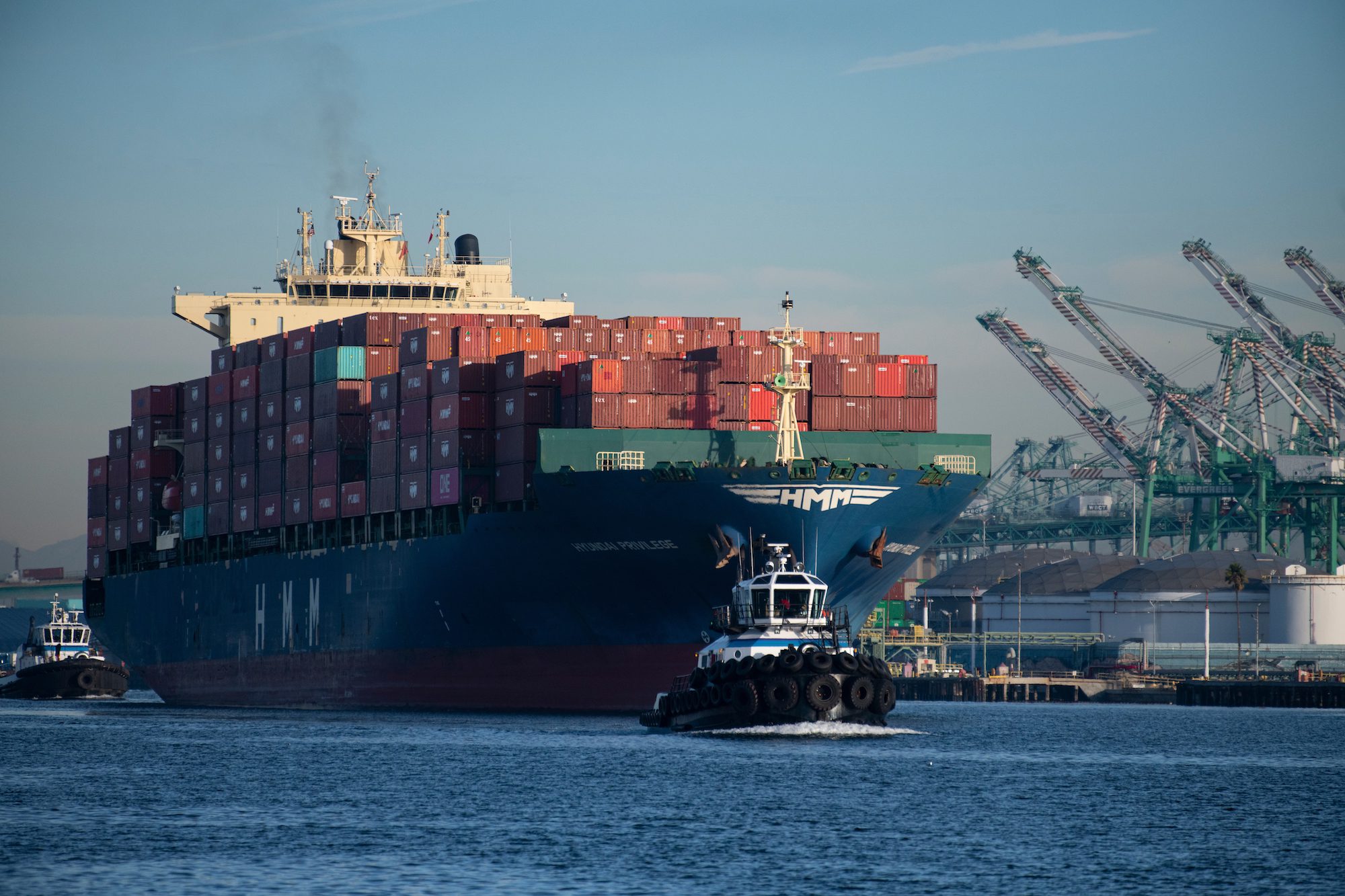The West’s Squeeze on Russian Tankers Gets Tighter
By Julian Lee (Bloomberg) — Another week, another gentle turning up of the heat by Group of Seven nations on the fleet of tankers moving Russian petroleum around the world, writes...


A tug escorts a HMM containership at the Port of Los Angeles, California. Photo: Robert V Schwemmer / Shutterstock.com
The nation’s major container ports have already reached their anticipated peak for import cargo volume this year, signaling a gradual slowdown as the holiday season approaches, according to the latest Global Port Tracker report by the National Retail Federation (NRF) and Hackett Associates.
“Cargo volumes will still be strong the rest of the year, but not as high as we expected a month ago,” said the NRF’s Jonathan Gold.
Retailers stocked up early this year to mitigate supply chain labor issues and meet consumer demand. Gold says although shoppers are spending more than last year, the rate of growth has slowed, prompting retailers to focus on balancing supply and demand.
Ben Hackett, Founder of Hackett Associates, says concerns over inflation and high interest rates, particularly for groceries, automobiles, and mortgages, have led to a slowdown in discretionary spending, which will contribute to the expected decline in retail cargo imports.
According to Global Port Tracker, inbound volume at U.S. ports was projected to reach 2 million TEUs in August and maintain that level through October. However, August’s imports came in at just 1.96 million TEU, up 2.3% from July and the busiest month of the year so far. Nevertheless, it represented a 13.5% decrease compared to the same period last year. September and October are forecasted to see volumes of 1.94 million TEU, down 4.3% and 3.1% year over year, respectively.
In the second quarter, consumer spending grew 1.8% year over year, lower than the initially estimated 2.3%. The NRF also indicated last month that retail sales for the year may fall at the lower end of the 4%-6% year-over-year growth forecast.
Hackett noted that these trends are already reflected in the operational decisions made by ocean carriers.
“They have slowed down their ships in an attempt to cut capacity without having to take vessels out of service as new, larger ones ordered when demand was higher are delivered. Even so, ships are not sailing fully loaded, and freight rates are declining as a result. That’s a further indication that no cargo growth from current levels is expected on the near-term horizon. Perhaps 2024 will be better,” said Hackett.
Looking ahead, November is expected to show a 7.5% increase from the previous year, reaching 1.91 million TEU. This would mark the first year-over-year gain since June 2022. December is forecasted to have a year-over-year increase of 8.9%, with a volume of 1.88 million TEU.
These projections would bring the total import volume for 2023 to 22.1 million TEU, a 13.5% decline compared to the previous year. In 2022, imports totaled 25.5 million TEU, a slight decrease of 1.2% from the record set in 2021, which stood at 25.8 million TEU.
As we enter 2024, January is expected to match December’s volume at 1.88 million TEU, representing a 4.2% year-over-year increase. February, typically the slowest month due to Lunar New Year factory shutdowns in Asia, is forecasted to have a year-over-year increase of 12.7% at 1.74 million TEU.
Join the gCaptain Club for curated content, insider opinions, and vibrant community discussions.


Join the 107,327 members that receive our newsletter.
Have a news tip? Let us know.
Access exclusive insights, engage in vibrant discussions, and gain perspectives from our CEO.
Sign Up




Maritime and offshore news trusted by our 107,327 members delivered daily straight to your inbox.



Essential news coupled with the finest maritime content sourced from across the globe.
Sign Up